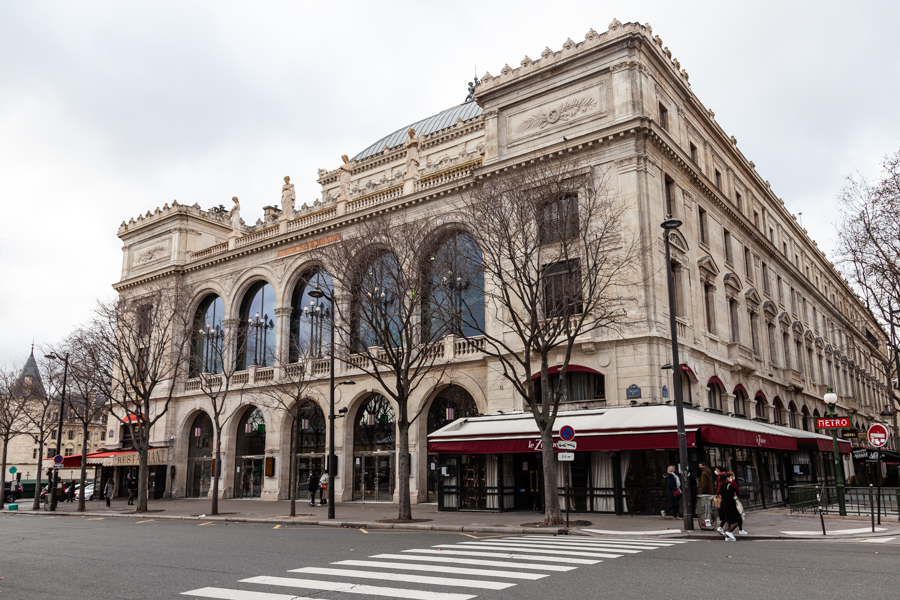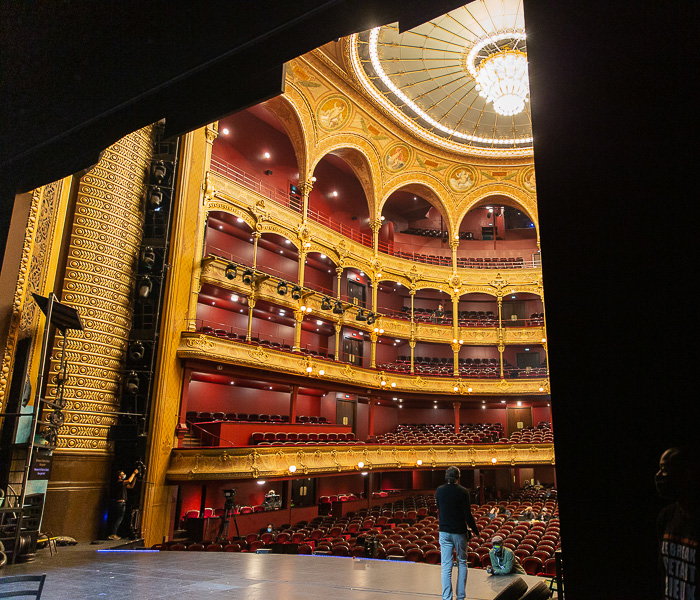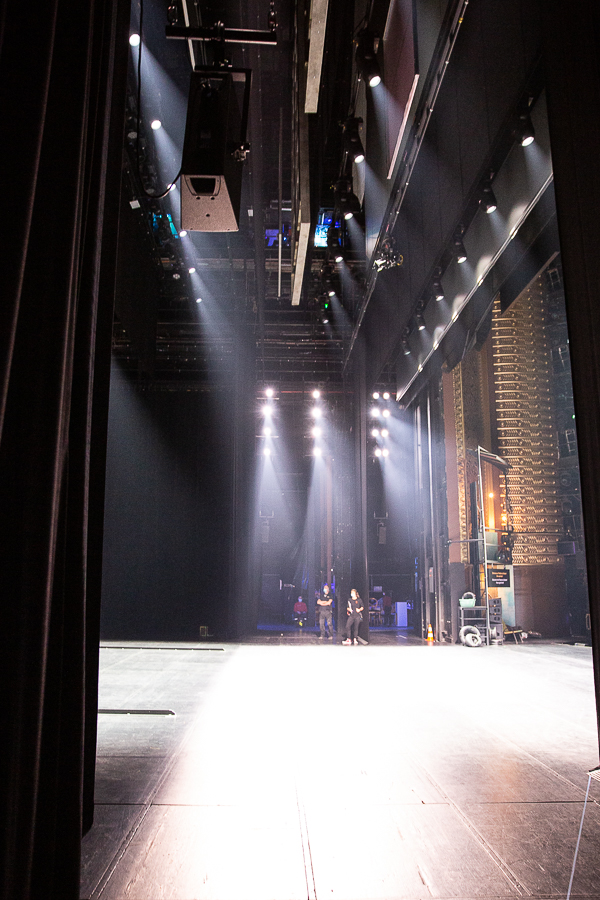Renovated over the period from 2016 to 2019 as part of a program financed by the Paris City Council and certain sponsors (Total, Accor), for a total budget of 30 million euros, the Théâtre du Châtelet has been brought up to current electrical codes, and has also renewed its equipment and constructed a digital network.
The restored venue now offers a seating capacity of 2000 and the fly loft is now equipped with 59 motorized fly bars capable of supporting up to 750 kg of scenery (supplied by Baudin Chateauneuf – Waagner Biro). The new lighting equipment acquired in 2019 is perfectly adapted to the size of the venue and to the requirements in terms of optical and color performance as well as in terms of silent operation.
Thus, Robe T1 Profiles with five-color LED engines, SolaFrame 3000 High End Profiles for their long-range firepower, and ETC Lustr profiles with seven-color LED sources have been added to the Châtelet’s inventory.
As is the case in many large theaters around the world, the lighting package is now controlled by the Eos system. The team chose two Eos Ti consoles and an Ion Xe 20, connected through a new sACN network to seven ETC Sensor3 dimmer cabinets. The venue thus offers the versatility necessary to meet the very diverse demands of the productions it hosts.
The network
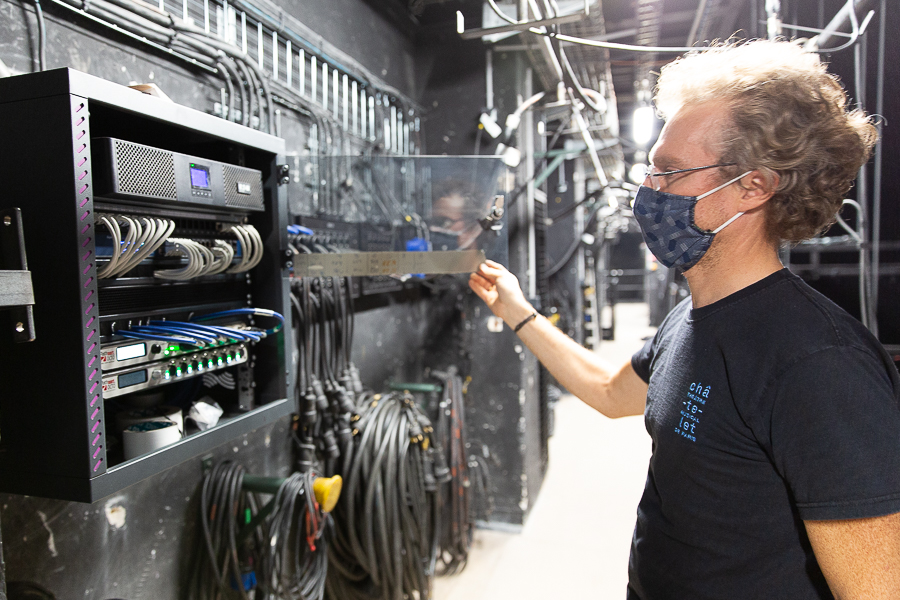
Christophe Leuba, assistant to the Master Electrician Renaud Corler, welcomed us for a tour of the theater.
Then we discussed with Fabrice Gosnet the strong points of this network installation. We appreciate their support.
Fabrice is a well-known network consultant and trainer at Goosera, and also an SLU contributor.

Fabrice and Christophe have known each other since 2007, and Christophe has also taken one of Fabrice’s network training courses. This helped him to make design choices for the venue’s new network.
The Eos consoles are connected to a network that provides secure interconnection thanks to a ring topology. The sACN protocol used is supported by the ETC dimmers that power the stage equipment, but also the house lights of the auditorium, which can be controlled by the console or an architectural controller.
The system is designed so that any console supporting sACN can be added to the network and take control of the system.
The network architecture of Théâtre Châtelet
The network tree
Fabrice Gosnet : “The network tree is made up of several racks with Luminex Gigacore 26i switches in six of them, which constitute one of the elements of the network backbone. Each switch is connected to any another by at least two links to create a ring topology.
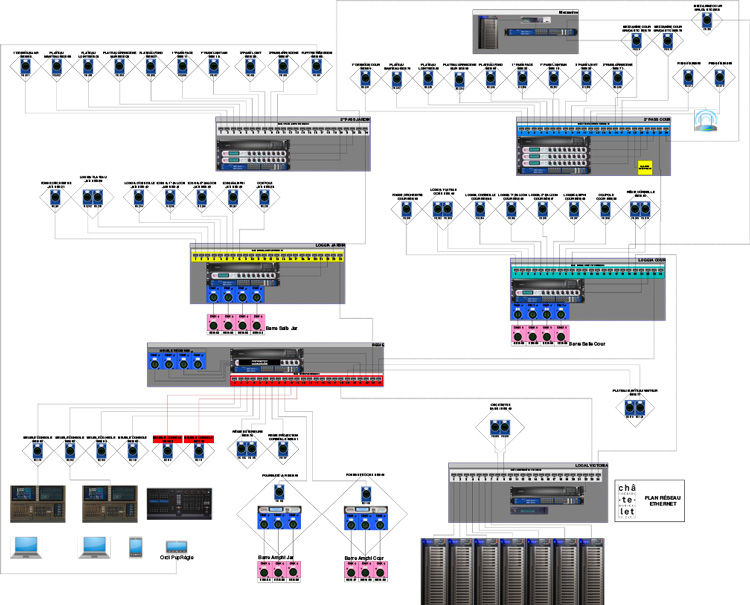
The advantage of this topology lies mainly in the security of the connections. If one of the links is broken, the signal can continue to flow using the backup links. And to provide even more security, a small additional ring was created between the control room rack and the rack at the loggia (at the border between the stage and the auditorium).”

SLU : How is the signal distributed to the fixtures?
Christophe Leuba : “The six Luminex Gigacore 26i switches receive the network in the auditorium and guarantee continuity. In each rack, we install nodes to convert the streaming ACN universes into DMX lines.”
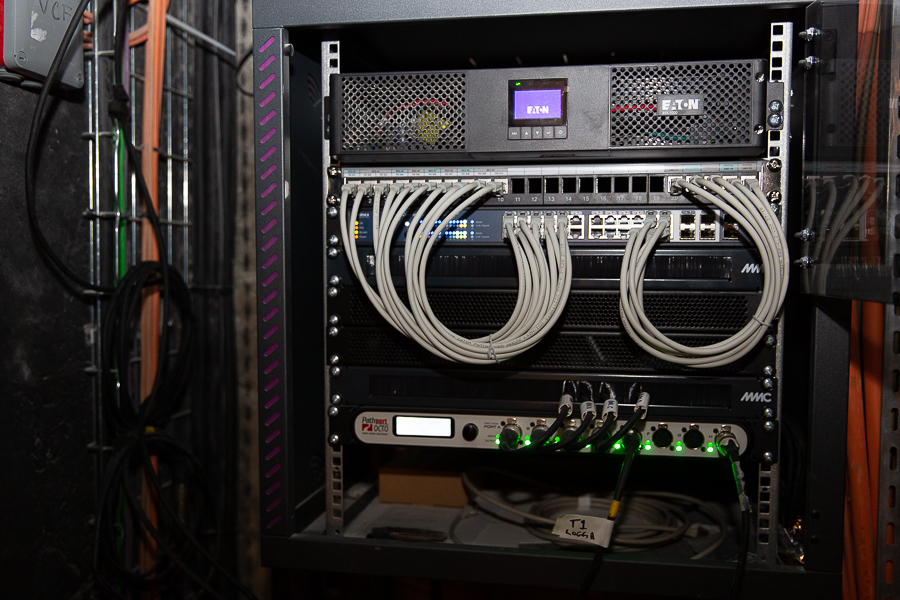
SLU : Do you ever use wireless DMX?
Christophe Leuba : “Yes, we use a Lumen Radio link in some cases, such as to control the movement of battery-powered props on stage. And the transmission is very reliable. For Le vol du Boli we put a receiver on an LED sign that simulates old neon lights. It was mounted on a batten and, rather than running cables, we controlled it with wireless DMX.”
SLU : The team has chosen to use traditional copper cables. Why not optical fiber?
Fabrice Gosnet : Because the distances did not require it; they preferred to run CAT6A cable for reasons of cost, while keeping in mind that cable is more sensitive to interference, especially in a theater where there is a tremendous number of lines on dimmer circuits.
That’s why SNEF (the company that installed the cables) specified S/FTP, which is the insulation type used in the cable.
‘S’ signifies braided shielding around the four pairs and ‘FTP’ means there is foil tape around each pair. The insulation of the cable is extremely good, so they are well protected against interference.
“Furthermore, this will allow the Châtelet team to upgrade to a 10-Gbit backbone when the time comes.”
Qualified cables
Fabrice Gosnet : “You should know that the Châtelet technical team chose to have its cables qualified, as opposed to certified. Qualified means that SNEF has carried out performance tests on the cables.
There are two ways to verify the cabling in an installation:
– A cable certifier performs electronic tests along the entire length and is able to certify that the cable meets the requirements of Category 6A and that it can operate at a particular data rate or bandwidth, that the pairs are the right length, etc.
This is quite technical but it ensures that there is not too much interference on the network cable, that the connections have been made correctly, and that it is certified for the correct data rates and bandwidths.
– A qualifier performs other tests. For example, he will send voice over IP, video over IP, to finally say: it’s good, the architecture is qualified. This process is what we call ‘a cabling validation’ or ‘acceptance test’, but it is also a removal of doubts. In case there are problems, we know that part has been tested.”
SLU : And what about the Luminex Gigacore 26i switches?
Fabrice Gosnet : “The nodes and switches are located all over the venue, so it’s flexible and well thought out. Another advantage of the Gigacore 26i is that its interface is easy to use and user-friendly. Thanks to this, a trunk line was implemented between all the switches to route the VLANs throughout the network. The teams in charge have thus created several VLANs: one for the lights, one for the lobby, etc.
If someone needs a link between the control room and the gallery, for example, all they have to do is create a virtual network within the network architecture, which then allows them to connect the equipment to the ports assigned to this VLAN. It then exists in its own world within the network architecture and won’t clutter up the others, nor will it require cables to be run across the auditorium. This is a real time saver for the crews hosted in the theater.”
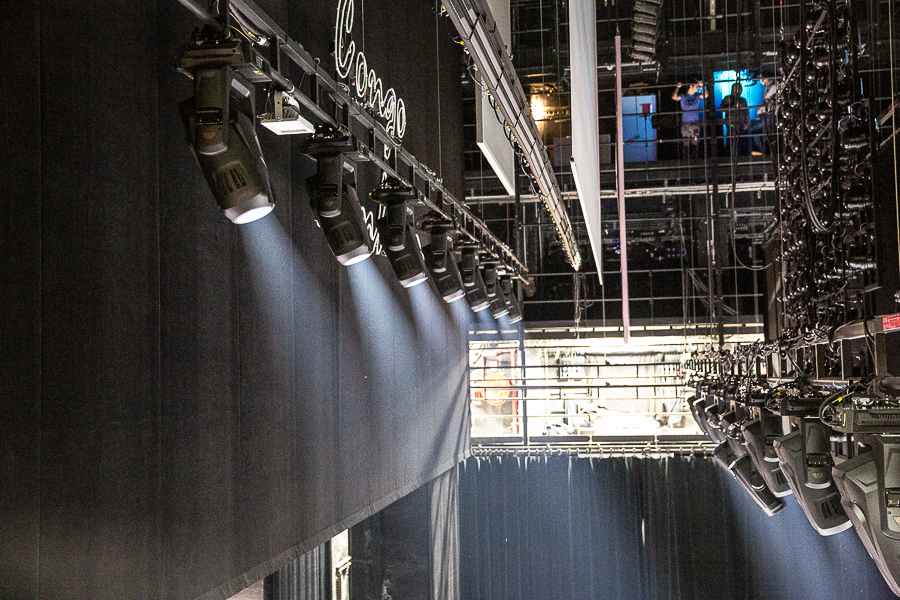
sACN and on-demand network
SLU : The team opted for sACN rather than Art-Net. Can you briefly explain the strengths of one over the other?
Fabrice Gosnet : “sACN is a multicast protocol that is more efficiently managed within the network, and I congratulate them for this choice. Indeed, the network architecture features IGMP Snooping, and the multicast streams will only go to the devices that are assigned to the streams, so we don’t ‘flood’ the devices that don’t need it. This is what we call on-demand networking. In addition, the theater may host grandMA consoles, for example. Since their nodes are Pathway nodes, sACN was chosen to allow them to communicate (and thus not with ETC Net).
This means that it is possible to connect a grandMA console directly and use the existing nodes. It is therefore a time saver for visiting crew to be able to take over quickly and easily. Unfortunately, Pathway nodes don’t support RDM via sACN and ETC consoles only support RDM via their ETCNet 3 protocol, which means that if teams want to send RDM from the Eos, they would need ETC nodes.”
SLU : Are there any upgrades planned to address this issue?
Fabrice Gosnet : “There is RDMNet, which is available since September 2019. This is the new official standard for RDM-over-IP because today most people use ART-Net, and in particular ART-RDM, which is not a standard but an open source solution.
In September 2019, RDMNet was ratified and, since ETC was one of the developers of this protocol, the code is already ready to support RDM from ETC consoles. We can now only hope that Pathway will update its nodes to be RDMNet-compatible, which will allow the teams at the Châtelet to be able to manage RDM directly from their consoles.”
B. 600 ETC Sensor3 dimmers controlled by Eos

All the electrical distribution was brought up to code and the dimmers were replaced by 600 ETC Sensor3 modules, which communicate via sACN with the lighting consoles. These are distributed in seven cabinets, which are themselves powered by a brand new low-voltage distribution board with a 15,000-volt transformer.

The lighting kit of Théâtre du Châtelet includes HMI sources, conventional halogens, arc lamps and intelligent moving lights.
Each source is connected to a dimmer and from the console you can choose a direct or dimmed mode according to the type of fixture.
The dimmers are directly controlled via sACN. Most of them use DMX distributed by the nodes, as we will see later.
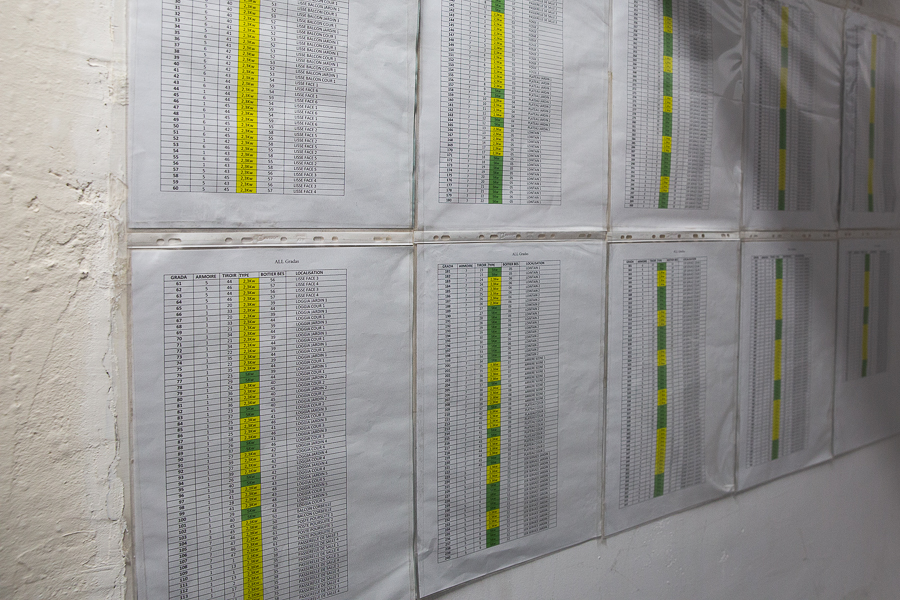
SLU : Fabrice, what is the strong point of the ETC Sensor3 dimmers?
Fabrice Gosnet : “Their strong point is their flexibility. You can switch a circuit to dimmed or direct mode, either remotely or manually at the hardware level. This avoids having to go down to the dimmer room.
In addition, monitoring of the equipment is available through the ETC Concert software, which allows the ETC equipment to be viewed over the network. There is also what I call “the spy”, the Net3 Conductor, which logs all events and allows you to see if there have been any changes or not. It is a very powerful and practical tool.
Their size is also appealing and makes them fairly easy to install, as the cabinets don’t look like Normandy Armoires (laughs). They are columns of reasonable width that fit quite easily in small passageways. ”
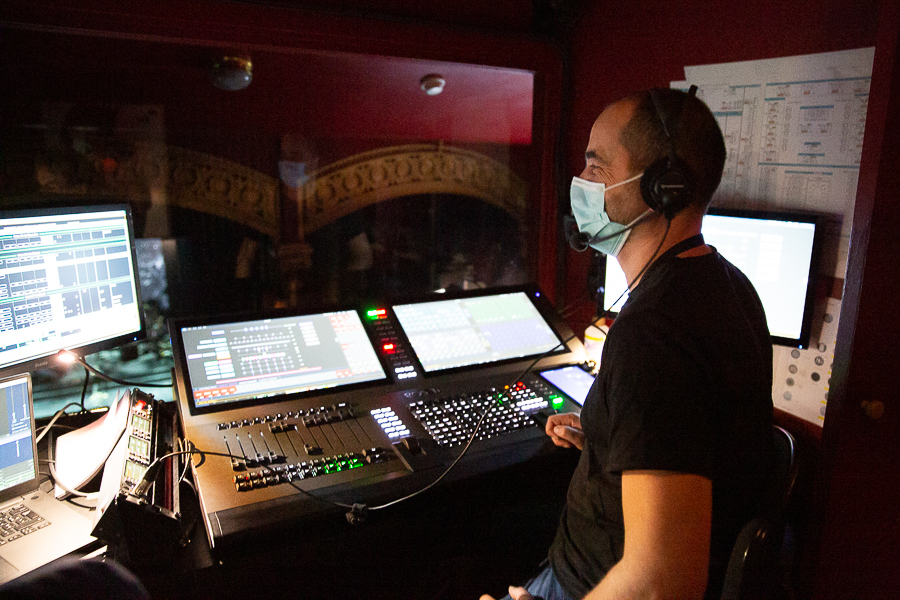
SLU : Did the team have any difficulties transitioning to the ETC console?
Christophe Leuba : “We have had them since September 2019 and the crew is very happy with them. The system is stable and we haven’t had any breakdowns. The installation contractor (SNEF) and the supplier (ETC) came to configure the dimmer cabinets. Then the team familiarized themselves with the equipment by training as they went along, on small, simple tutorials produced by ETC and available on Youtube.”
Franck Sallard (console operator at the Châtelet) : “Compared to the old equipment, the color management tool is really good, especially for transitions involving LED fixtures.”
Christophe Leuba : “Whether it is for the T1 Robe with its five-color engine or the Lustr ETC with its seven-color array, the ‘Color Picker’ makes it possible to retrieve gels from a library of color swatches from several brands: Rosco, Lee Filters, etc. It was developed mainly for the Lustr. They are calibrated so that you can really get the same exact color as a classic profile with a gelatin. For example, if you need a Lee 205, you simply press Lee 205, and you’re done.”
The “Color Path” mode using the Color Picker’s touch screen allows you to easily and intuitively program the transition from one color to another on the LED luminaires, avoiding undesired hues.
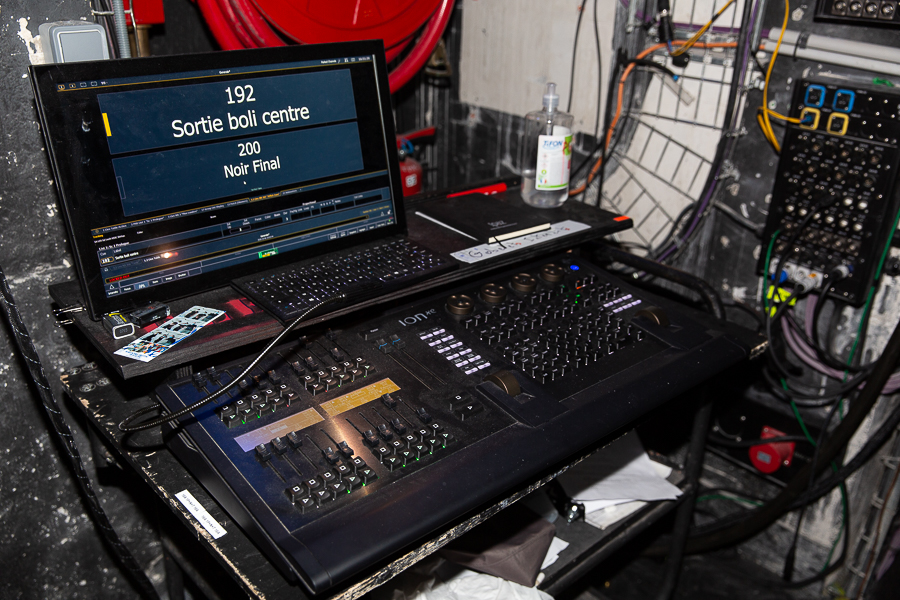
SLU : So the philosophy behind the software is important to you.
Christophe Leuba : “Color management was decisive in the choice of this console. Even though it is less versatile than other well-known consoles, for us it was practical not to have to speculate on which route to take, because there was only one.”
Christophe also tells us that since Eos consoles are regularly specified by the British and American productions, having these in house has considerably simplified the process of accommodating them.
The lighting kit
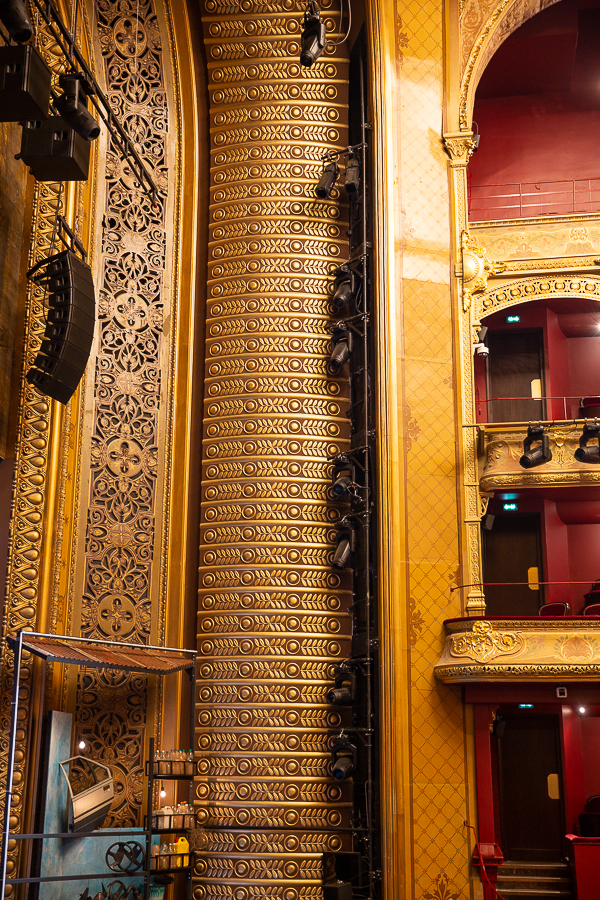
A. Robe T1
The Théâtre du Châtelet has invested in 42 Robe T1 moving-head profiles, also delivered in 2019.
On the day of our visit, two rows of eight were aligned horizontally on each side of the auditorium, in addition to two box booms with seven each at the level of each of the loggias, and a bar of six crossing the stage at the height of the proscenium arch.
SLU : What appealed to you about the Robe T1?
Christophe Leuba : “It doesn’t weigh anything, it’s a blast to use and when you’re behind the console and you turn the shutters, it works and moves in the right direction, which isn’t the case with all units.
Its menu is hyper-intuitive – no need to ‘get used to the fixture’. I found it almost too easy (laughs).”
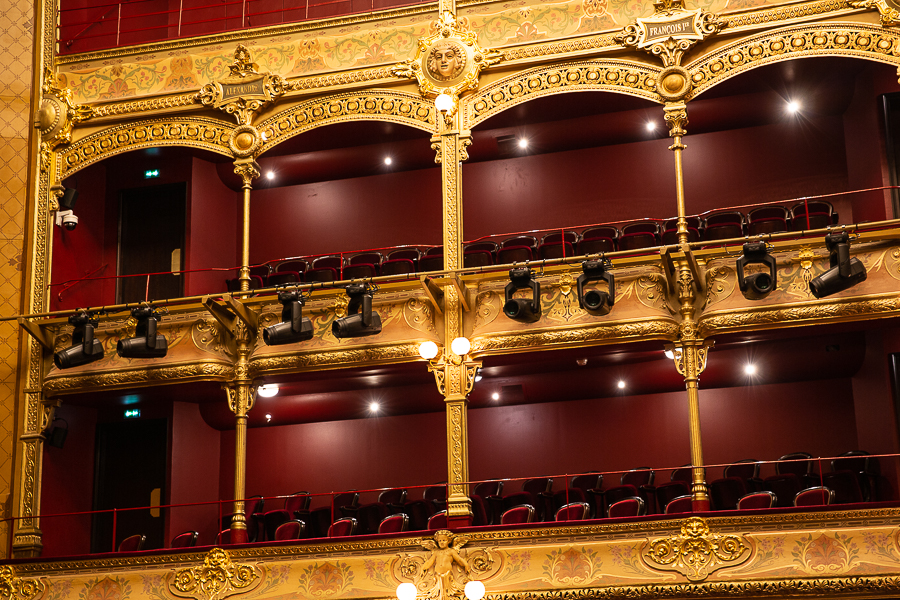
B. The frontal lighting and followspots
Part of the work consisted in reorganizing the upper section of the balconies, in order to move the followspots a little higher and free up space to create more seats. To accomplish this, new fixtures and followspots were added to the theater’s inventory.
Prior to the renovation, beneath the arches were located the FoH followspots and three rails supporting 30 profiles. During the refurbishment, two followspot booths were created on the upper floor (the second balcony) to substitute this space with 30 additional seats.
The key lighting is now handled by four High End SolaFrame 3000s and two Robe Esprites controlled by the RoboSpot remote control tracking system.
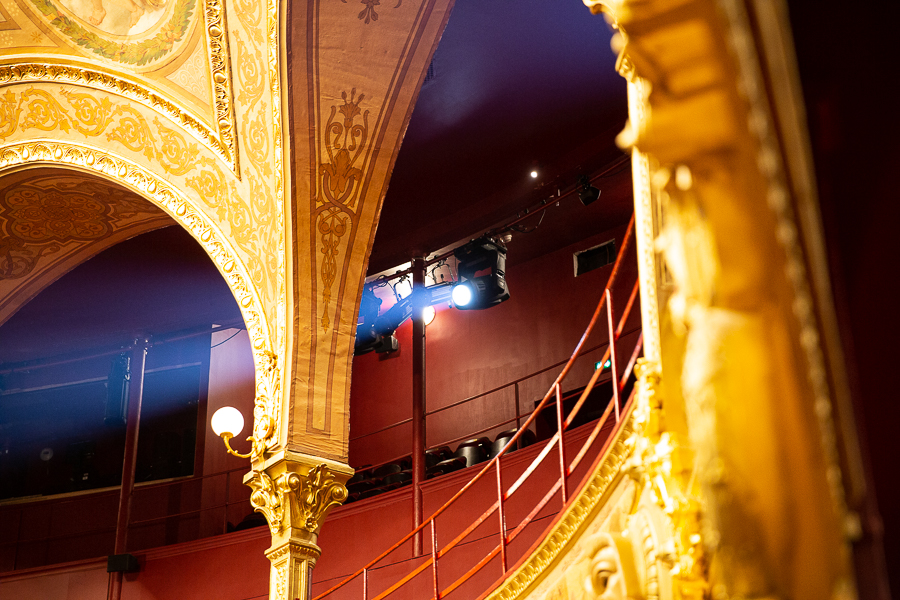
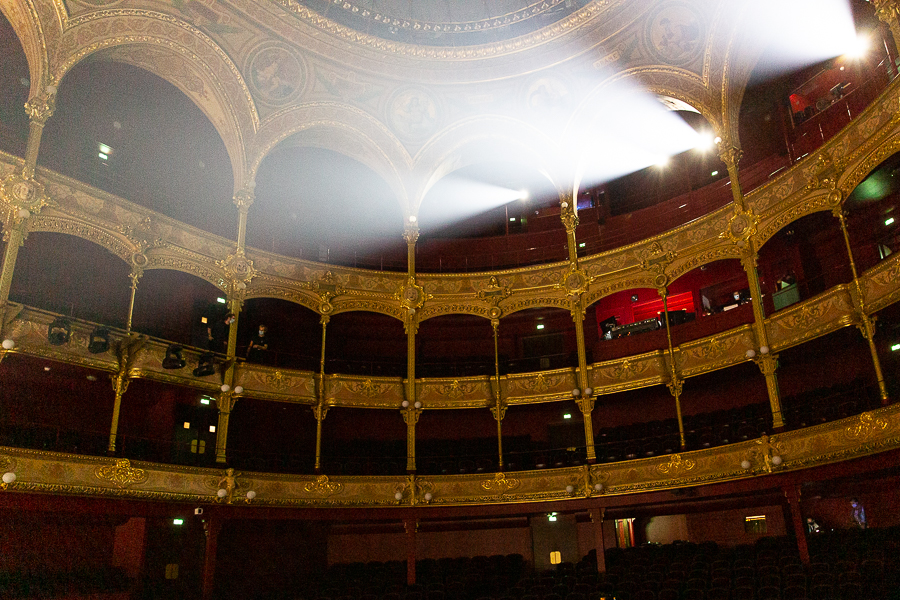
Christophe Leuba : “We use four SolaFrame 3000s to create a classic on-axis compensation of the key lighting elements, when necessary. We needed very powerful fixtures, like the SolaFrame 3000, because they are placed very high and very distant from the stage.”
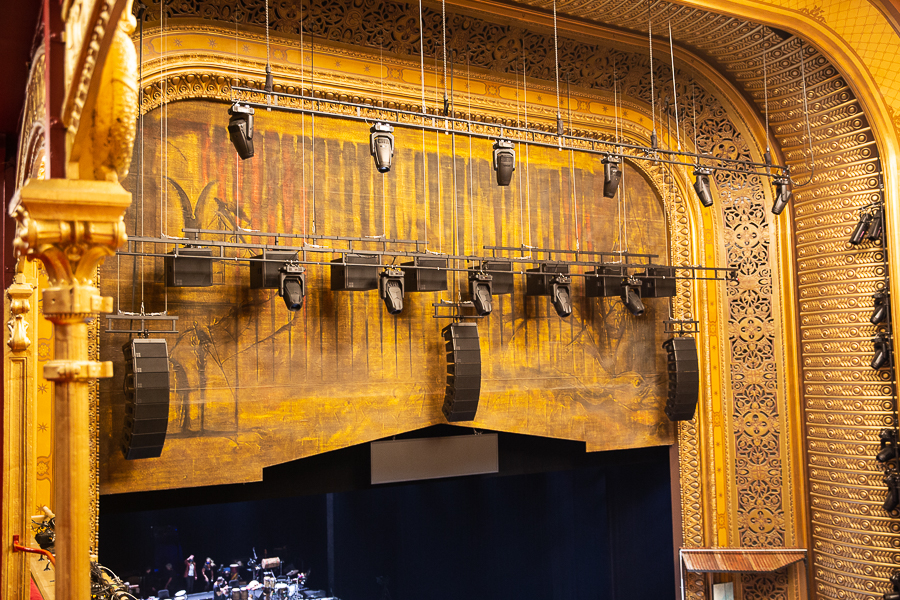
The RoboSpot, which we have often encountered on concert tours, makes its debut here in one of the most beautiful theaters in Paris. How does it feel to the crew, compared to its traditional counterparts? This is what we wanted to know from Christine, one of the four spot operators.
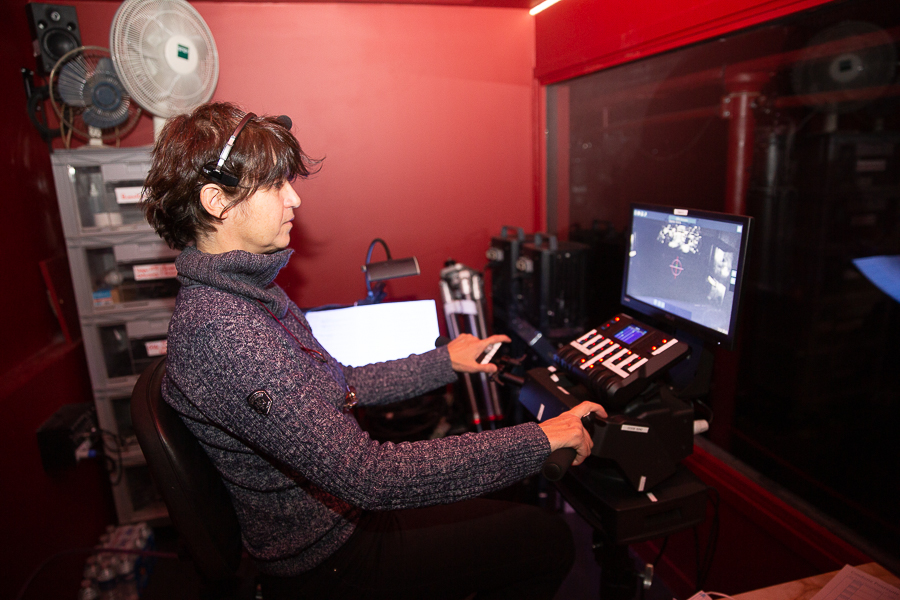
SLU : What are your thoughts on this system?
Christine Ragou : “It’s different and interesting. The feeling is different because the interaction with the stage is through a screen.
The sensitivity is also different for the intensity control. Because of the latency of the system, at certain moments that require precision, such as following a dancer in rapid movement, the execution is easier with a traditional spot, with which you become one.
It’s a matter of practice, it takes some getting used to and there are speed parameters that can vary while being careful that the lights don’t go all over the place.”
SLU : Are the intensity or colors carried out at your position or are they in the hands of the console operator?
Christine Ragou : “Before, when we were working with traditional followspots, we also managed the colors. Now they are managed from the console. We have control of the frost, as well as the dimmer and the iris. We can actually set the controls as we wish but there are not many controls, so it limits the possibilities a bit.”
SLU : How did you get acquainted with this new system?
Christine Ragou : “We had a two-hour training session and then I was able to practice during rehearsals.”
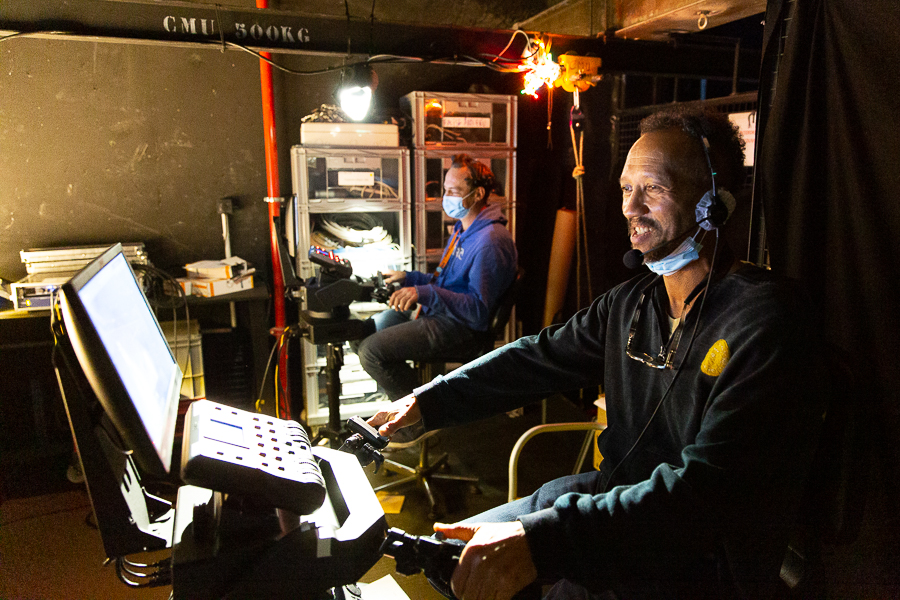
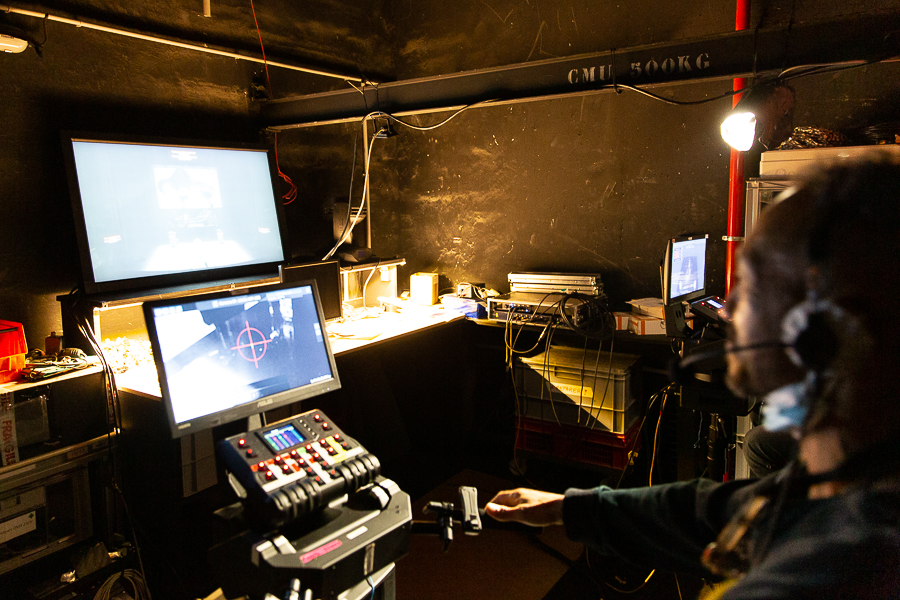
Conclusion
Access to real-time information opens up new horizons thanks to new applications such as ETC Concert and the Conductor, which allow remote device monitoring.
Lighting, sound and IT networks are now working together more and more frequently. This convergence opens the door to new work methods, but also brings with it the need to protect oneself in terms of cyber security.
Fabrice tells us that laws are being put in place in the United States to legislate the security of audiovisual streams within network architectures. For example, Pathway nodes now offer ssACN (Secured Streaming over ACN), an encrypted sACN stream that protects the potential decoding of this protocol, thus avoiding malicious takeovers.
Thanks to a team that is well versed in new technologies, the Théâtre du Châtelet is equipped for the present and the future with reliable, high-performance tools, a flexible network that facilitates welcoming productions from all over the world, without technological barriers to impede cultural exchange.
Technical staff
Technical Director: Violaine Crespin
Master Electrician: Renaud Corler
Assistants: Bernard Maby, Christophe Leuba
Assistant cheifs: Jeremy Priam, Frederic Bialas
Console operators: Franck Sallard, Jean-Philippe Lagarde
Followspot operators: Dominique Ossou, Christine Ragou, Franck Boutron, William Lepape
Stage electricians: Emmanuel Nechaoui, Sami Ayed, Hervé Langlois
Material List:
72 x ETC S4 25°/50° Lustr 2 Profiles
46x High End SolaFrame 3000
4 x Robe RoboSpot
42 x Robe T1
Network:
6 x Luminex GigaCore 26i switches
1 x Luminex GigaCore 12 switches
2 x Luminex Luminode 4 nodes
14 x Pathway Pathport Duo nodes
7 x Pathway Pathport Octo nodes
1 x ETC Net3 Conductor
1 x ETC Paradigm controller
Further info
In SLU : Robe T1 product test and High End SolaFrame 3000 product test
For further information on the different ranges:
– ETC products
– Luminex products
– Pathway products
– Robe products



